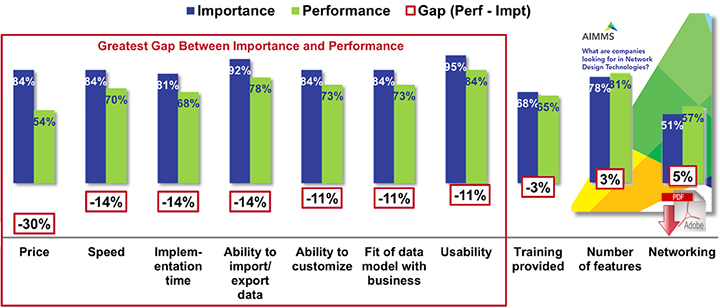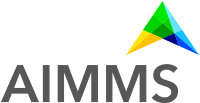Selecting Software for Supply Chain Network Design Doesn’t Have To Be Difficult

Network design as a discipline is complex and most organizations struggle to answer network design questions or test hypotheses in weeks, let alone days, and certainly not hours, but it doesn't have to be that difficult.
Supply Chain Network Design
When it comes to network design, you can’t just set it and forget it anymore.
Today’s successful supply chain networks are adaptable.
They react swiftly to changing business conditions and customer needs.
They scale quickly when there’s an opportunity for growth.
But network design as a discipline is complex and most organizations struggle to answer network design questions or test hypotheses in weeks. Let alone days, and certainly not hours.
Proactive risk assessment rarely occurs. Reactive evaluation post-event is the norm. Technology is part of the problem.
As Lora Cecere, the Founder and CEO of Supply Chain Insights writes, systems are becoming more complex, “but the primary means to manage trade with network partners is through spreadsheets and email.” This needs to change.
Yet choosing and implementing a new network design tool can be a hassle.
Technology Needs To Be More Accessible
Network design technology has scarcely evolved since the nineties. Implementations are often slow.
But perhaps the biggest drawback of commonly used solutions is their price. 84% of respondents in a 2017 study stated that they want an affordable network design solution, but only 54% of them thought available tools meet their price expectation.
The result is that most companies stick with spreadsheets.
Greatest Performance Gaps are in Price, Speed, Implementation Time and Import/Export Data
Point solutions that only address the network design and optimization question may solve the immediate problem of advancing from Excel, but it’s important to consider how they fit into a holistic supply chain planning ecosystem.
The Process of Software Selection Needs to Change
Drawing on Lora Cecere’s research again, companies are still thinking in transactional terms and not focusing enough on planning data. On top of this, software selection largely follows IT standardization. Only 7% get a test run of the software.
Cultural fit between vendors and buyers is rarely considered as well. In the end, supply chain teams get frustrated and sometimes the software gets shelved.
There are a few things you can do to avoid this situation.
What to Consider When Choosing a Supply Chain Network Design Vendor
Our recently published Buyer’s Guide for Supply Chain Network Design Software helps supply chain teams find technology to become more proactive and less reactive when it comes to network design and optimization.
We developed the Guide based on research conducted among supply chain professionals.
The insights we gained led us to develop the following checklist of items you should consider when evaluating and choosing supply chain network design vendors:
- Don’t use a standard RFP approach, take time to define your needs and the capabilities required to support these and then ask vendors to describe how their solution enables those capabilities
- Identify and share your pain points and opportunity areas
- Choose what is right for you…do you want to be self-enabled or do you prefer a solution to be implemented by 3rd parties?
- Form a team that will participate in software selection
- Research available suppliers via analyst recommendations, reports, etc.
- Get demos and pricing structure
- Sign an NDA and share selective data with your preferred candidate(s). They should be prepared to use this to build a POC model, the output from which can be used to support your business case
- Work closely with your leading candidate to truly understand fit, your level of data maturity and a project plan
- Confirm accountabilities across your business and get a timeline and resource information
- Get started and capture benefits
More Insights into the Buyer’s Guide for Supply Chain Network Design Software
If you’re curious about what your peers in the supply chain are looking for in network design technologies and how they rate their network’s maturity, download the Buyer’s Guide for Supply Chain Network Design Software.
You’ll also find more key characteristics to look for in vendors and how AIMMS is responding to market concerns.
Related White Papers
Buyer’s Guide for Supply Chain Network Design Software
This Buyer’s Guide helps you find easy-to-use technology to become more proactive and less reactive when it comes to network design and optimization. Download Now!
What Are Companies Looking For in Network Design Technologies?
The purpose of this study is to understand the value proposition of supply chain network design technologies, including user satisfaction and key benefits and barriers to using these technologies. Download Now!
Optimization Technology as a Catalyst for Supply Chain Innovation
Advanced analytics and decision support tools have proven to be a valuable resource for progressive supply chain professionals driving transformation in their organizations, despite this, many organizations still struggle to find the right technology to support their efforts. Download Now!
More AIMMS Resources
Article Topics
AIMMS News & Resources
The Post-Pandemic Warehouse & Distribution Center Workplace Assessing Supply Chain Planning: Ready for Today’s Challenges? Supply Chain Professionals Say Planning Process is “Somewhat Effective” Regardless of Technology Spending Too Much Time on Data Crunching and Not Enough on Resilient Planning Decisions Supply Chain Planning, Optimized | 3 AIMMS Case Studies Organizations are Betting on New Technologies to Improve Demand Forecasting Accuracy How is Demand Forecasting Changing? More AIMMSLatest in Supply Chain
Trucking Industry Pushes Back on Government’s Electric Mandates Senators Take Aim at Amazon with Warehouse Worker Protection Act Maersk Sees Silver Lining in Red Sea Shipping Challenges Happy Returns Partners With Shein and Forever 21 to Simplify Returns Baltimore Opens 45-Foot Deep Channel Following Bridge Collapse El Paso Border Delays Cost Juarez $32 Million Per Day in Economic Losses Ranking the World’s 10 Biggest Supply Chains More Supply Chain

















